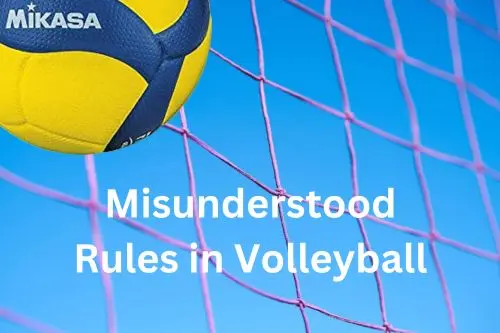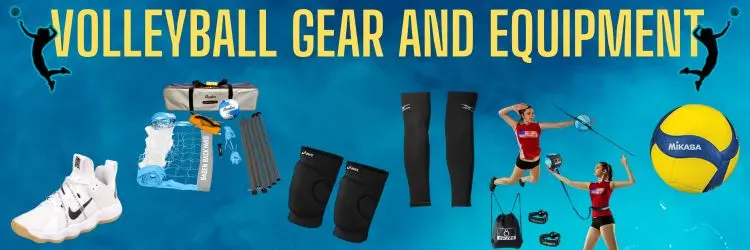Misunderstood Rules in Volleyball

Common Misunderstandings in Volleyball Rules
Volleyball, like many sports, has a set of rules designed to create fairness and order within the game. However, many players, coaches and even spectators frequently misinterpret or misunderstand certain volleyball rules. This can lead to confusion during games and may even affect the outcome of matches.
Whether you’re a beginner or an experienced player, understanding the intricacies of volleyball rules can help prevent costly mistakes and ensure a smoother, more enjoyable experience on the court. In this article, we will explore some of the most common misunderstandings in volleyball rules and provide clarification to ensure everyone is on the same page.
The “Double Hit” Rule
One of the most commonly misunderstood rules in volleyball is the “double hit” rule. A double hit occurs when a player contacts the ball twice in succession, typically on the same play. While the rule is straightforward, its interpretation can be confusing in certain situations.
Misunderstanding:
Many players believe that any two consecutive contacts with the ball by the same player are automatically considered a double hit. However, this is not always the case.
Clarification:
A double hit is only called when a player contacts the ball twice in succession in an uncontrolled manner. For example, if the ball contacts a player’s hands twice in quick succession (with no separation), a double hit violation occurs.
However, a player is allowed to make multiple contacts with the ball during a single rally, as long as the first contact is clean and the second is controlled. For example, a player can pass the ball with one hand and then follow up with a quick set. This would not be considered a double hit as long as the two contacts are separate and clean.
The “Four Hits” Rule
Another area of confusion lies in the “four hits” rule, which involves the maximum number of times a team can hit the ball before it must be sent over the net.
Misunderstanding:
Some players and coaches wrongly assume that a team can hit the ball four times in a row if they have no intention of setting up a spike. This leads to confusion when a team appears to make a successful set and hit the ball again, only to be penalized for exceeding the four hit limit.
Clarification:
In volleyball, a team is only allowed three hits to get the ball over the net. The fourth touch results in a point for the opposing team. A common exception is when the first contact is a block, which does not count as a hit. Therefore, the team still has the option of hitting the ball three times following a block. It’s also important to note that the number of hits per team is reset after the ball crosses the net.
The “Libero” Rule
The Libero is a specialized player in volleyball who is allowed to play in the back row and replace any back-row player. However, there are numerous misconceptions about the Libero’s role and restrictions, especially regarding substitution and positions on the court.
Misunderstanding:
A common misconception is that the Libero is allowed to serve or play in the front row, but this is not the case.
Clarification:
The Libero is not allowed to serve, attack the ball above the net’s height, or rotate to the front row. They are restricted to playing in the back row only. The Libero’s main responsibility is to receive serves, pass and play defense.
Additionally, the Libero can only replace a player in the back row and this substitution is often done without the need for the referee’s approval. The Libero may also be substituted in and out multiple times during the game, but they must always return to the same position on the court.
The “Foot Fault” Rule
A foot fault is a violation that occurs when a player steps on or over the service line during their serve. Many players think that as long as the server’s foot stays behind the line at the moment of contact, they are in the clear. However, foot faults are commonly miscalled or misunderstood.
Misunderstanding:
Players often think it is only a violation if their foot completely crosses the service line, but the rule is more specific.
Clarification:
According to the official rules, a foot fault occurs if any part of the server’s foot touches or crosses the service line before they make contact with the ball. This means that even if a player’s toe is over the line at the moment of the serve, it counts as a foot fault. This rule applies regardless of whether the serve is successful or not and the player will lose their serve.
The “Net Touch” Rule
Touching the net during a volleyball rally is one of the most commonly debated violations. Many players mistakenly believe that any contact with the net results in an automatic loss of the point.
Misunderstanding:
A net touch violation is not automatically called unless a player’s body or hands interfere with the net in a way that affects the rally.
Clarification:
While it’s true that touching the net is a violation, it only results in a point for the opposing team if the net contact interferes with the play.
For example, if a player touches the net with their hands while attempting to block a ball, but it does not disrupt the flow of the play or the opponent’s ability to attack, it is not necessarily a violation. However, if a player’s net contact causes the ball to be deflected or affects the other team’s play, it results in a point loss.
The “Attack Hit” Rule
The “attack hit” rule governs how players can legally hit the ball, especially in regard to the net and the positioning of their hands.
Misunderstanding:
One common misunderstanding is that players can spike the ball from anywhere on the court, even from behind the 3 meter (10 foot) line, without restriction.
Clarification:
A player is allowed to attack the ball from behind the 3 meter line only if they jump from behind that line and spike the ball while in the air. If they are standing on or inside the 3 meter line when they jump, they cannot legally attack the ball above the net’s height. This is why players in the back row typically avoid attempting to spike the ball unless they are jumping from behind the attack line.
The “Serving Rotation” Rule
Proper serving rotation is essential in volleyball, but many players find themselves confused by the rules that govern the order in which players rotate and serve.
Misunderstanding:
Players sometimes think that they can serve out of turn as long as they are in the correct position on the court when it’s time for them to serve.
Clarification:
Serving rotation must follow a specific order. If a team does not serve in the proper rotation, it will result in a side-out or loss of serve. Players must serve in the exact order established at the beginning of the set and they must also be in the correct position on the court during their service turn.
Any deviation from this order, such as serving out of turn, will result in a violation and the opposing team will earn a point.
Conclusion
Volleyball is a fast paced, exciting sport and understanding the nuances of the rules can make all the difference in how players approach the game. Misunderstandings around rules like double hits, four hits, the Libero, foot faults and the attack hit often create unnecessary confusion.
By familiarizing yourself with the true meanings and clarifications of these commonly misunderstood rules, you can avoid mistakes and better appreciate the flow of the game.
Being aware of the details of volleyball’s rules not only ensures fair play but also helps foster a deeper understanding and respect for the sport. Whether you’re playing, coaching, or spectating, clearing up these common misconceptions will lead to a more enjoyable experience for everyone involved.


